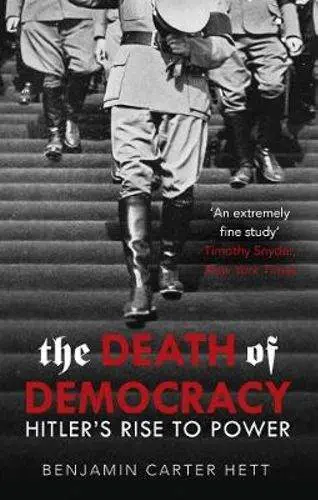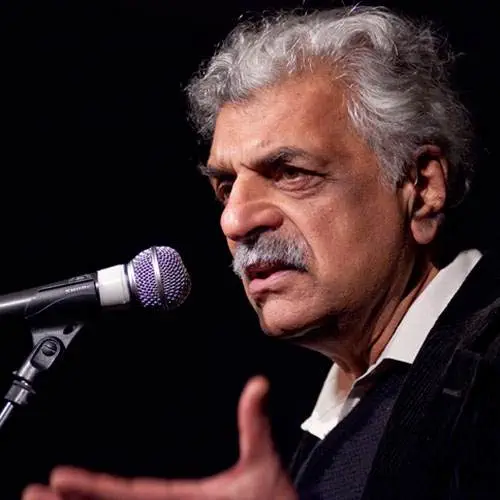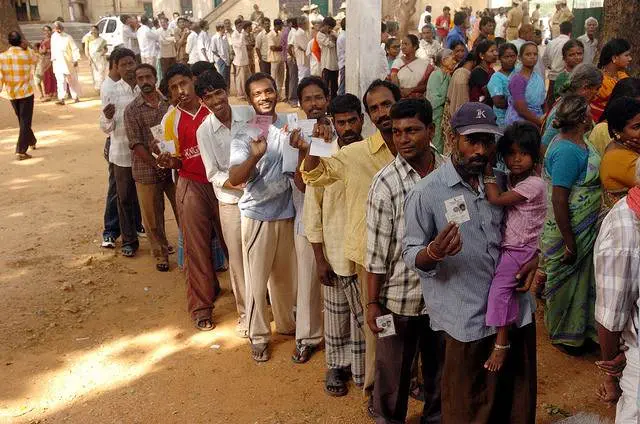Review of the Book The Death of Democracy by Benjamin Carter Hett ***

I was inspired to read this book after listening to Fareed Zakaria speaking of the state of democracy in the United States of America, post the Presidential elections of 2020. The ‘Coup’ on Capitol Hill happened in the meanwhile on 6 January 2021. The other great democracy is India, where the current ruling party’s ideologies are influenced by Mussolini and Nazism. A future awaits to roll out for these democracies.
The aim is to understand that Democracy in itself provides no guarantees if the fundamental ethos of the society is invariance. Thus, it can lead to authoritarian rule and fascism, itself dying in the process. It cannot guarantee to be absolute of, by and for the people.
Many questions about the Third Reich remained, which the book answers in a gripping narration of events. While there is familiarity with Hitler’s horrendous rule, this book is about the rise of the Nazi Party within a constitutional democracy. Why and how Hitler rose to power?
There are several characters, locations, and events that the book describes to give the reader a context. The book is specific to events that led to the rise of Hitler from the Beer Hall Putsch (Munich Putsch) a failed coup d’état he led on 8 and 9 November 1923, onward up to the early half of 1933 when he gained complete power.
Hett has narrated the events in great detail and I have gone slightly beyond the remit of a review drawing from more sources to amplify similarities in the prevailing situation in the oldest and largest democracies.
The Weimar Republic
The Weimar Republic was Germany’s government from 1919 to 1933, the period after the First World War until the rise of Nazi Germany. Prior to that was the German Empire 1871 to end of the War in 1918. It was named after the town of Weimar where Germany’s new government was formed by a national assembly after Kaiser Wilhelm II abdicated. Deutsches Reich (German Empire). Nazi Germany, the state often referred to as the Third Reich, which lasted from the seizure of power in 1933 until the end of the Second World War in Europe in 1945.
Characters
Hett sketches in detail, the personalities of individuals who brought about the rise of Hitler to power. The key ones were:
Paul von Hindenburg (1847-1934): Career army officer who retired in 2011. Was recalled in the First World War, Commander in Chief of German Army 1916 to 1919. Elected President of the Reich in 1925 re-elected in1932. He appointed Hitler Chancellor in January 1933.
Adolf Hitler (1889-1945): An Austrian Corporal in the First World War. Leader of the National Socialist German Workers Party (Nazi Party) from 1920 to 1945. Chancellor and Further 1934 to 1945. He led the Beer Hall Putsch which was a failed coup d’ `etat by the Nazi Party. He was wounded during the clash, escaped, arrested two days later, and charged with treason. It brought him to the attention of the German nation for the first time and generated front-page headlines in newspapers around the world. A widely publicised 24-day trial gave him a platform to express his nationalist sentiments to the nation. Sentenced to a 5-year prison term, he was released after 9 months on 20 December 1924. He wrote Mein Kampf in prison. Once released, he directed his focus towards obtaining power through legal means rather than by revolution or force, and accordingly changed his tactics, further developing Nazi propaganda.
Kurt von Schleicher (1882-1934): Career Army officer who was head of the army’s ministerial office for liaison with politicians from 1928. Advisor to Hindenburg, defence minister in 1932. Chancellor from December 1932 to January 1933.
Franz Joseph Hermann Michael Maria von Papen (1879 – 1969): was a German conservative politician, diplomat, Prussian nobleman and General Staff officer. He served as Chancellor of Germany in 1932 and as Vice-Chancellor under Adolf Hitler from 1933 to 1934.
Political parties: Of the several parties, the important ones were the National Socialist Workers Party (Nazi Party), The German National People’s Party (a conservative party), Social Democratic Party of Germany and The Steel Helmets, a party of veterans.
The fire at the Reichstag
The Reichstag (parliament building) was set on fire by an unknown person. Even as the fire was raging Goering the new Interior Minister and speaker of the house, arrives at the spot followed by the new Chancellor Hitler and his propaganda chief Goebbels. Papen the vice chancellor and Diels the chief of secret police also arrives. Hitler seems to know who set the fire and rages “there will be no mercy … every communist official will be shot … they will be hanged this very night.”
His press calls this the most monstrous Bolshevik act of terror. A counter press expresses a suspicion that ‘hirelings’ had reached the Reichstag through a secret entrance from Goering’s house. Even before the flames were extinguished, the Berlin Police worked through prepared lists rounding up communists, pacifists, clergymen, lawyers, artists, writers … anyone who they deemed hostile to them. At the same time Nazi Stormtroopers (party musclemen, vigilantes who were organised, later uniformed) went around Berlin making arrests of their own. They did not register their prisoners, many were killed. Berliners coined these as ‘wild concentration camps.’
Thus, 27 February 1933 was the last day of the Weimar Republic.
Hitler’s rise to power
Hitler’s party had won two elections and at the end of January 1933 Hindenburg who disliked the idea of a Corporal coming to power reluctantly but properly invited Hitler to form the government. The cabinet formed was very much like Papen’s but a bit more to the right. Papen a Catholic was a protégé of Hindenburg, both were from a military class and despite the strong Lutheran differences.
Hitler’s government was a coalition of the German National People’s Party, The Steel Helmet, and other nonpartisan parties. The Nazi party held just two portfolios with Reich the Nazi activist as Interior Minister and Goering as minister without portfolio. More importantly Goering held the post of Interior Minister of Prussia a state which was three fifth of Germany in size and population. (He later nazified the large state police intelligence into a nation-wide outfit, the Gestapo).
Hitler was pushed to power because of his demagogic gifts and mass following which everyone wanted to take advantage of to progress their own agendas. The elitist Barons and Military class disliked him but went along, also because of a constitutional obligation. Hindenburg was dead against promoting him but had to give in to advisors. There was always a feeling of ‘let him come in, we can always kick him out.’ Hitler’s government was designed to be weak.
Yet he became Chancellor by the end of January 1933.
The big question is how did this happen?
The 1919 constitution of the Weimar Republic created a state-of-the-art democracy. It was a great balance between development, activism, and social growth. Individual freedom, gender equality, gay rights and abortion, Germany was leading the world through its liberal modernism. With an eight-hour working day Germany’s openness and tolerance made it an attractive destination for Jewish migrants from Poland and Russia.
Germany led the world not only in activism and politics but also the arts, surpassing Paris. It’s reputation in science and scholarship was unrivalled. Hitler’s regime had destroyed all this and left the question unanswered.
Hett does put forth a probable reason. Much of current history is the result of the unravelling histories of periods of time. More knowledge gets revealed with each layer. Most of the Nazi knowledge we know is of the residue of Nazi propaganda. Critical source materials emerged from the fall of the Soviet Union and East Germany, which is still being processed by historians. The early post war years went with the impressions of denazification and attempts at avoiding war crimes. Much of the impression about Hitler came from the propaganda that he had sacrificed his all-personal life to devote himself to his people. Historians believed that he was an unperson, a man who would come alive only when he addressed people.
There is an international context to the rise of Hitler. It is linked to the rise of global liberal capitalism of the post war world. The Anglo-American order had linked financial (economic) austerity to democracy. Which meant payments of debts and reparations and the return to the gold standard. Germany had lost the war and had reparations to pay. Political logic against this austerity also worked against a liberal democracy. Along with this the Nazis also responded to the globalisation as a result of post war treaties. It examined the ethnic identities in demarcation of borders, the rights of minorities and treatment of migrants, and refugees. They were also influenced by Turkey, Russia, Italy, the British Empire, and the United States. Even their violence and Stormtroopers were tied to larger influences.
We cannot imagine the Nazi Party without the First World War, there would not have been one. The two main periods of time that were crucial to their growth are the August of 1914 vs November 1918. The beginning and the end of the war.
The global situation and the war could help in understanding the wide popularity of the Nazis, but they could never have Hitler come to power without the help of the conservative establishment which was Hindenburg, the army, and his advisors. Hitler had to win them over. They could have stopped him in his tracks but chose to use him with an awkward Nazi-conservative alliance.
Hitler had the rare ability to capture the attention of a crowd, but the key to understanding Germans supporting him is the rejection of rational, factual world. (always think the unthinkable). The reality was that Germany had lost the war with two million dead, an unpopular revolution (that put an end to the Monarchy), a seemingly unjust settlement, a reparation debt and economic chaos that affected social and technological change. There were many conspiracy theories that laid the blame on a clique of freemasons, Jews, communists, and capitalists. Hitler was adept at spinning these theories to his advantage. No one else could do it as well.
Despite its glorious days the Weimar Republic was beset with number of political parties each with their own social interests. In fourteen years of the republic the administration changed hands twenty-one times!
Hitler’s appeal was against the Weimar Republic which was coded as ‘the system.’ The divisions in German society remained and he had managed to convince as many Germans as he needed.
Hitler was in awe of the rise of Mussolini. The Munich coup was inspired by Mussolini’s march on Rome. He was a great admirer of Ataturk, who had discarded the post war treaties. The Nazis approved the Armenian Genocide of 1915 and the expulsion of Greeks from Turkey … these they believed made a strong Turkey which they admired. He worked alongside White Russian emigres to Munich, who convinced him of a Jewish conspiracy to overthrow Russia and the Weimar Republic. They imagined an international Jewish conspiracy and that a ‘Jewish dictatorship’ and Soviet Union was a product of it.
The Nazis had brought with them an unpleasant change to German politics. It was coarse brutality by almost everyone, usually the trait of their Stormtroopers. The uncouth behaviour prevailed. Even people like Goebbels who had not served in the war did not hesitate to criticise those who had.
‘The whole Nationalist Social agitation is a constant appeal to the inner swine in Human beings … the Nazi’s could do what they liked, they can never match the level of our contempt for them.’
Kurt Schumacher, Social Democrat from West Prussia
There was opposition to it foremost from Kurt Schumacher a war-wounded Social Democrat from West Prussia. He said it was pointless to lodge a complaint against Goebbels, ‘The whole Nationalist Social agitation is a constant appeal to the inner swine in Human beings … the Nazi’s could do what they liked, they can never match the level of our contempt for them.’
By July 1932, the Nazi’s had won an outstanding victory, with 37.3% of the votes they had 230 seats in the Reichstag. They were the largest party by a wide margin, the Social Democrats were following with 27% and 133 seats.
The night of the elections Nazi Stormtroopers raided across Germany. It led to several murders. The Social Democrat administration had strict laws for political murders. The perpetuators were rounded up and sentenced, but the Nazi’s showed them sympathy and support. Germans were shocked to see the defiance and break from legality. The army had drawn up plans to suppress the behaviour of the party. Thus, from August 1932 to January 1933 it was a duel between Schleicher who was running the Social Democrat administration and Hitler.
This was a period of political turmoil. Hindenburg did not want to hand over power to Hitler. Dissolving the Reichstag was an option. Another round of elections was held in December, the Nazis had lost a share to the communists. Around 15 January 1933, the Nazi’s decided to take part in a Municipal election, quite insignificant to national politics, but a great psychological and propaganda booster for the party. This had bearing on Hindenburg’s decision to appoint Hitler as the Chancellor on 30 January 1933.
The Enabling Act of 1933
On 23 March 1933, this act signed by Hindenburg gave Hitler a free hand. It essentially ended democracy. Hett describes in fair detail ‘how’ more than the obvious ‘why’ the act came into being. It allowed laws to be passed without the Reichstag! The act was passed by the Reichstag that met at the Kroll Opera House (the Reichstag building having been burnt), all non-Nazi members were surrounded by SA (Stormtroopers) and SS (Hitler’s armed protection party). The communists were already suppressed.
Hett describes the propaganda of the Nazi’s as modern and technologically superior for those times. Radio, advertisements, imagery were all used effectively. Foreign journalists were of course thrown out of the country. Control of the press was absolute.
You still hear modified versions of his slogans of ‘One People, One Nation …’ used by the right wing parties of the day. Every kind of professional organisation was nazified. The federal system was attacked. This was Gleichschaltung, or coordination. An electronics term meaning that all switches are on the same circuit. Laws were passed to exclude anyone who did not stand up for the national state, the non Aryans. It thus included liberals, academics or any one who did not agree unless they provided a sufficient guarantee of a whole hearted support for the nation state. This was extended to states that put an end to any autonomy they enjoyed.
Hitler was adept at ‘false flag operations’ and did not hesitate to count his own party supporters as collateral damage. The ‘The Night of the Long Knives’ was the denouncement of Hitler’s flirtations with the conservatives. On 30 June 1934 he had got rid of many including members of the Nazi establishments to establish credibility to his rule.
Why did the Nazi’s rise ?
Peter Drucker, the management guru was a keen observer of Nazism. He thought that it evolved from an environment of a loss of belief not only in capitalism, but also socialism. Since there are no positive answers to social problems, Nazism could only be against everything. Thus, anti liberalism, anti-capitalist, anti-socialists, anti-conservatism, anti-atheism, anti-religious and most of all anti-Semitic. It was not about religion as those who intermarried had a greater chance of survival. Hitler himself and few party officials had a distant connection to Judaism.
Hitler was born in Braunau am Inn in Austria, on 20 April 1889. His mother was Klara Pole who was the third wife of his father Alois Hitler. Alois was born out of wedlock to Maria Anna Schicklgruber. Alois bore the Schicklgruber surname till he was 39. A theory that Alois’ family came from a Jewish connection as Anna Maria had worked as a maid in a Jewish household was refuted but still kept Hitler in doubt if something was found out. The 1935 Nuremberg Laws stipulated that no ‘Aryan’ should work as domestics in a Jewish household. Later in March 1938 when Germany occupied Austria, he converted the village of Dollersheim where his father had been born, to field firing ranges to obliterate any signs of his past. Hitler was thankful to his father for the change of name. He said, imagine ‘Heil Schicklgruber’! It would not have been the same!!
Naziism succeeded not because people believed in their messages, but in spite of the fact they did not. It had been countered by a hostile press, cinema, radio, church, and government that had untiringly pointed out its lies, dangerous course … Ducker concludes ‘nobody would have been a Nazi if rational belief in their promises was a prerequisite.’
It turned out to be a cult of irrationality. Few Germans in 1933 could imagine what was to happen. We have an advantage as we have their example before us.
***
The Death of Democracy
Penguin Random House,
ISBN 9781786090300, 280 pages.





